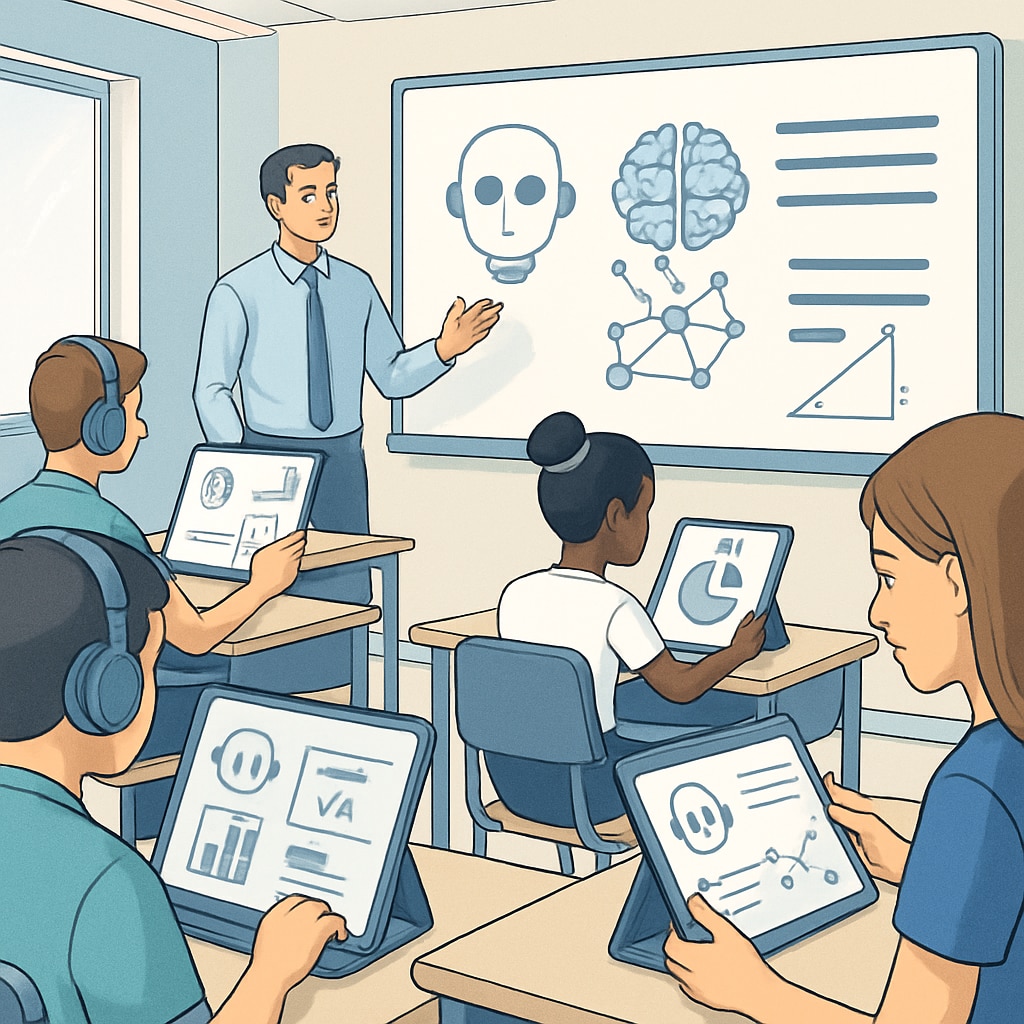Artificial intelligence (AI) is rapidly transforming industries worldwide, and its impact on school education is no exception. As AI technologies continue to evolve, their potential to reshape K12 education over the next decade becomes increasingly evident. From enabling personalized learning experiences to redefining teachers’ roles and revolutionizing assessment methods, AI promises to create a smarter and more adaptive educational ecosystem. However, this transformation also brings challenges that educators and policymakers must address to ensure equitable access and ethical implementation of AI in schools.
Personalized Learning: A Tailored Approach to Education
One of the most promising applications of AI in education is personalized learning, where technology adapts to meet the unique needs of each student. AI-powered platforms can analyze individual learning styles, strengths, and weaknesses, allowing educators to deliver customized lesson plans and resources. For example, adaptive learning systems such as Khan Academy use algorithms to adjust the difficulty level of exercises based on student performance, ensuring that learners remain engaged and challenged.
In addition, AI can provide real-time feedback to students, enabling them to correct mistakes and deepen their understanding of concepts. This immediate response mechanism not only enhances learning outcomes but also fosters a sense of agency and motivation among students.

The Evolving Role of Teachers in an AI-Driven Classroom
While AI is often viewed as a replacement for traditional roles, its true potential lies in augmenting human capabilities. In the classroom, AI can automate administrative tasks such as grading and attendance tracking, freeing up valuable time for teachers to focus on more meaningful interactions with students.
Furthermore, AI can serve as a co-teacher, providing supplementary instruction and resources. For instance, virtual tutors powered by natural language processing (NLP) can assist students with homework or clarify complex concepts outside of school hours. Teachers, in turn, can shift their focus to mentoring, emotional support, and fostering critical thinking skills—areas where human expertise remains irreplaceable.

Innovative Assessment Methods for the Future
Traditional assessment methods, such as standardized tests, often fail to capture the full spectrum of a student’s abilities. AI has the potential to revolutionize evaluation by offering more holistic and dynamic assessment tools. For example, machine learning algorithms can analyze students’ problem-solving processes, creativity, and collaboration skills, providing a more comprehensive picture of their competencies.
Additionally, AI-powered tools can track long-term learning progress, identifying trends and areas that require intervention. This data-driven approach enables educators to make informed decisions and tailor instruction to address specific challenges, ultimately improving educational outcomes.
Opportunities and Challenges in Implementing AI
While the benefits of AI in education are immense, its integration also raises critical questions. Ensuring equitable access to AI tools is paramount, as disparities in technology availability could widen the digital divide. Moreover, ethical concerns surrounding data privacy and algorithmic bias must be addressed to maintain trust and fairness in AI-driven systems.
Collaboration between governments, educators, and technology developers will be essential to navigate these challenges. By establishing clear guidelines and investing in teacher training, stakeholders can create an environment where AI enhances, rather than disrupts, the educational experience.
In conclusion, artificial intelligence holds the potential to transform school education profoundly over the next decade. By prioritizing personalized learning, redefining teachers’ roles, and innovating assessment methods, AI can help create a smarter, more inclusive educational landscape. However, realizing this vision will require careful planning, ethical considerations, and a commitment to ensuring that all students benefit from these advancements.
Readability guidance: The article is structured with short paragraphs and clear headings. Lists and examples are used to enhance comprehension, while transitions (such as “for example,” “in addition,” and “as a result”) connect ideas seamlessly. The passive voice and long sentences are minimized to maintain readability.


